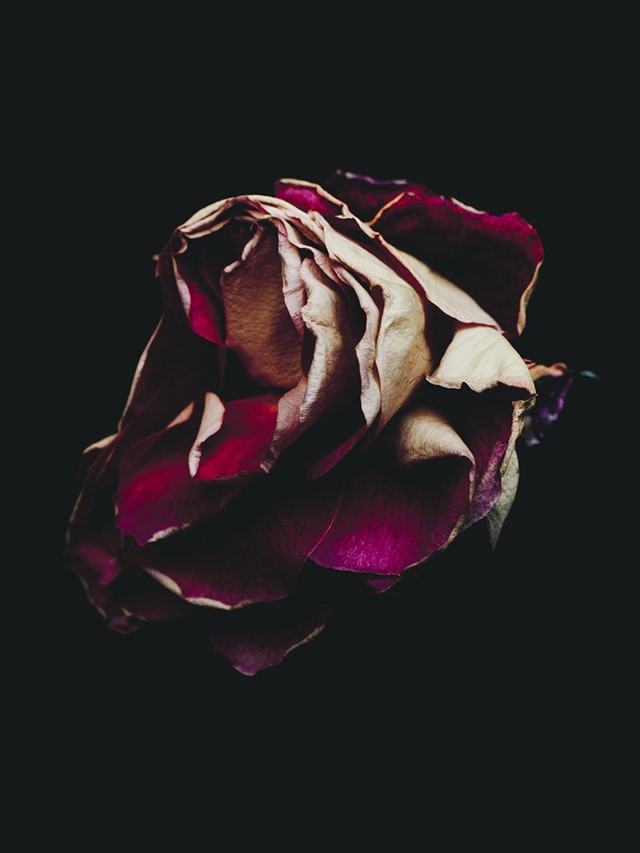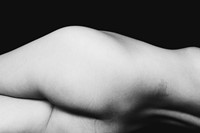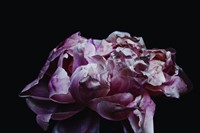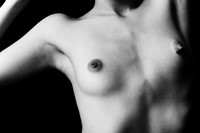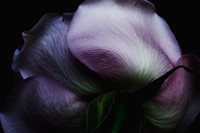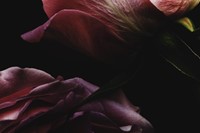Fashion and art photographer Billy Kidd discusses the transformative powers of decay, Renaissance art influences and the need for a reevaluation of beauty
New York-based photographer Billy Kidd, who has shot campaigns for the likes of Nike, Anthropologie and Eres plus photographed figures including Jeff Koons and James Franco, coincidentally discovered his craft whilst studying for a degree in computer engineering thirteen years ago. Entirely self-taught and the recipient of five PDN awards, Kidd has already exhibited his artistic endeavors at venues such as Clic Gallery and 10 Corso Como.
His sophomore solo exhibition, Transience, is a vivid visual study of beauty and mortality, placing the youthful curves of black and white nudes alongside heavily colour-saturated, yet simultaneously dying, flower still lifes. The fluid curves of the female body are mirrored in the soft shapes of wilting petals, both still bearing their organic imperfections, be it in the form of a birthmark on the lower back or veins tracing their way through the decaying floral matter. Following the opening of his show at Masters & Pelavin Gallery, Kidd sat down with AnOther to talk about the challenges of time in photography and the construction of beauty through life.
You decided to specifically pursue fashion photography early on in your career. Is there one favourite fashion image that still resonates in your mind today?
There is no one image but one man: Irving Penn. I especially like the portraits of his wife, Truman Capote, and his still lifes for Vogue.
What was the biggest challenge of creating this series?
Time was and still is the biggest challenge. I'm trying to catch these flowers at the right moment in between life and death. Too early and it's just a pretty picture of a flower, too late and you've lost the flower's character. Sometimes I would leave my camera pointed at a flower for days in front of a window waiting for it to sit just right.
How did your love of sculpture and Renaissance art influence the look of the nude photographs?
I think that comes out in my editing process. I'm a very organic shooter, often letting the model start to twist, turn and exaggerate her body. I'm sure subconsciously, the small directions I give send them into that realm, although in the editing process I often look for the more full bodies — the image you could feel with your hands.
The message behind the photographs is especially interesting given fashion's obsession with youth and Photoshopped perfection. Can you elaborate on the themes of beauty, decay and imperfection in this exhibition?
I feel we need to reevaluate how we link youth with beauty. As a flower dries and decays, the multitude of veins running throughout the petals and leaves begin to emerge in stark contrast to the body of the flower. The shape and feel of the flower is beautifully transformed in its maturity and eventual death. A shallow beauty can become a deeper, more fascinating beauty through life, akin to a pretty young girl becoming an even more beautiful woman who has realised that potential. You really do have to see the show in person. I arranged the images in such a way that the nudes of young women would reflect in the image opposite it, always a decaying flower and vice versa. My favourite combination is the duotone red/white rose which I have reflecting against the headless torso with a long scratch down her body. When standing in front of the nude, the flower perfectly reflects in the shadow of her body.
How do you find contrasts feeding into your work, i.e. beauty versus imperfection, youth versus death?
We have to be careful with the question because it implies that beauty is a constant. Imperfection is defined as an undesirable feature. Yet that undesirable feature may be the thing that another finds beautiful. So in a sense beauty can not be defined but can only be what that person believes beauty to be.
Transience marks the part one of a series, with the follow-up set to depict older women and seedlings. What can you tell us about this photographic sequel?
It's to drive home the fact that beauty is life, not youth.
Billy Kidd: Transience is at Masters & Pelavin, New York City, until December 7.
Text by Carla Seipp
Carla Seipp is a freelance fashion, arts and fragrance journalist. She contributes to publications including Twin, A Shaded View on Fashion and Dazed Digital.
